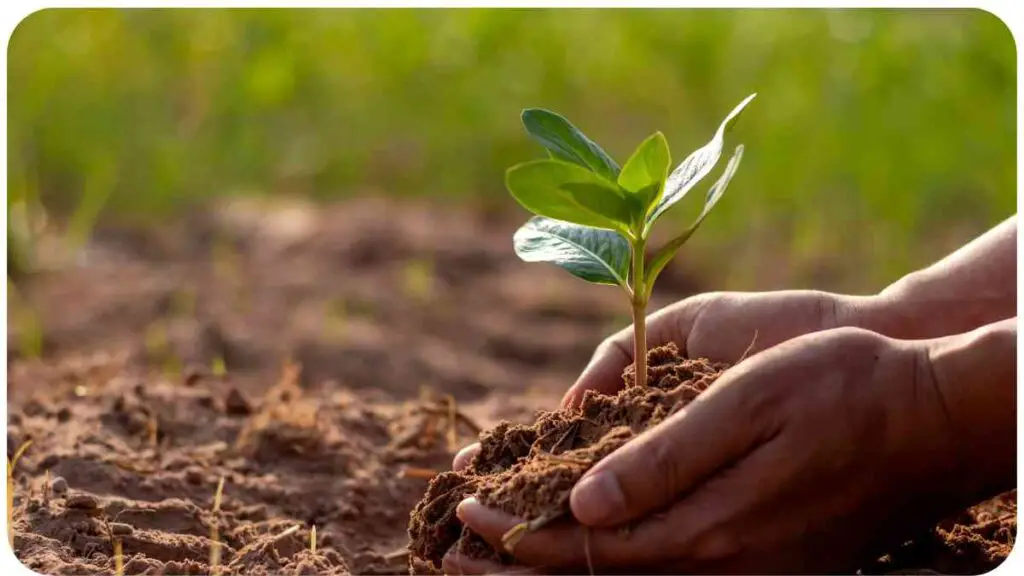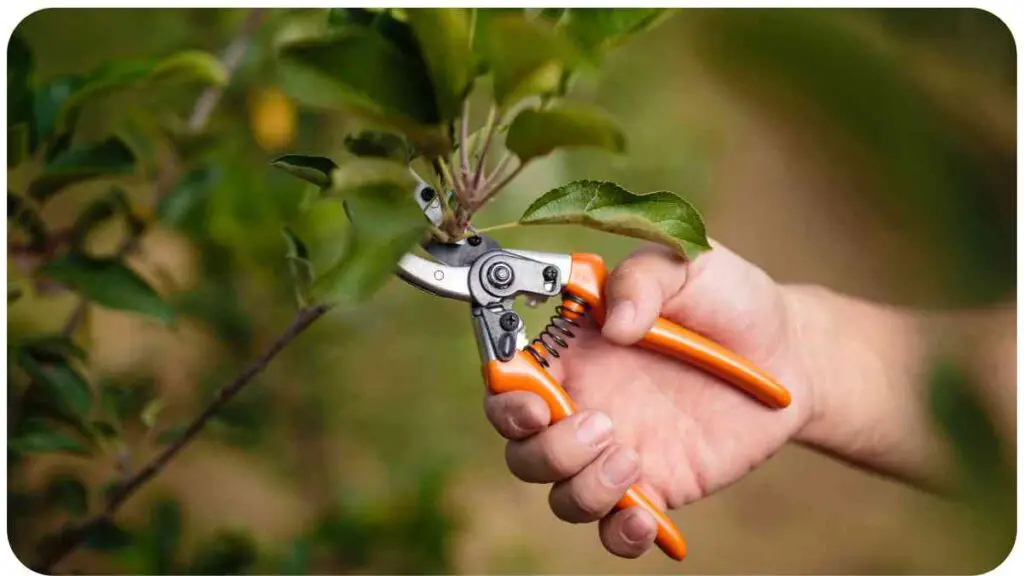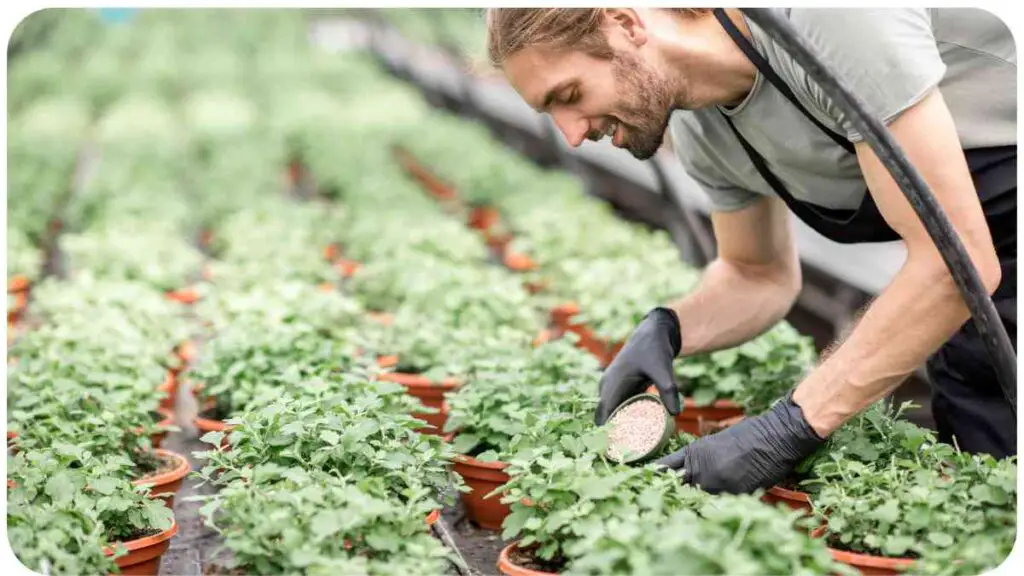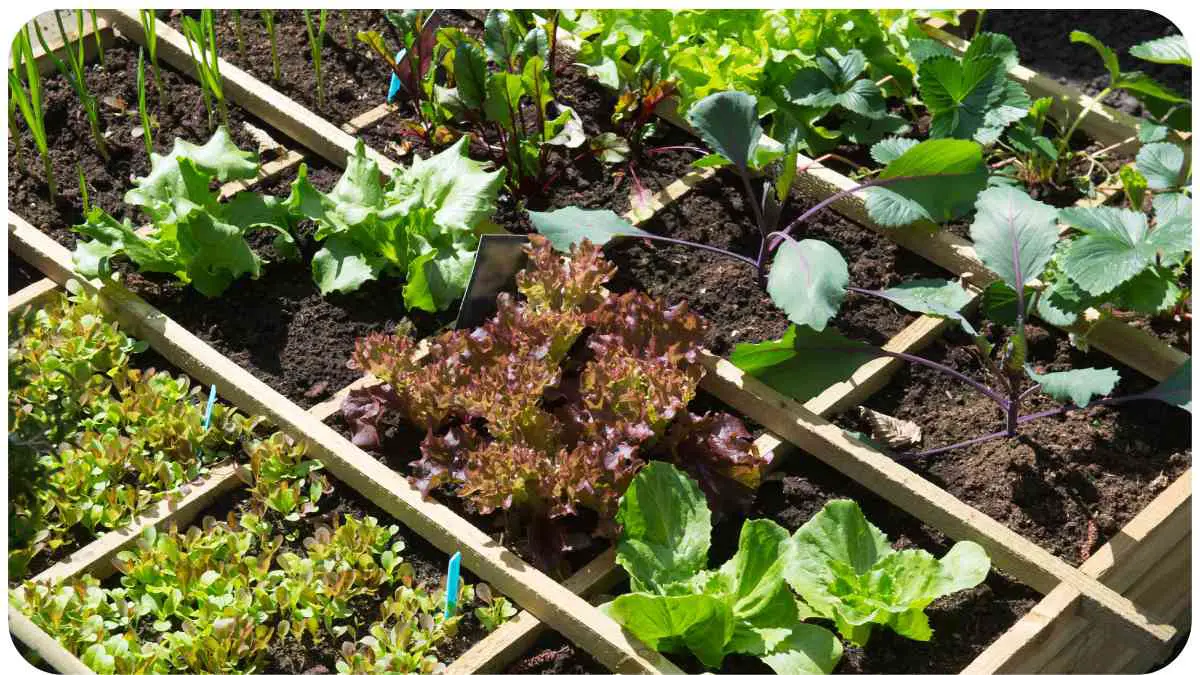Greetings, fellow garden enthusiasts! There’s nothing quite like the satisfaction of growing your own vegetables, but we’ve all encountered the frustrating challenge of stunted growth in our beloved garden at some point.
Fear not, for I’m here to guide you through a troubleshooting journey that combines my years of hands-on experience with a deep understanding of plant growth dynamics. In this article, we’ll embark on a journey to uncover the secrets behind stunted growth and equip you with the knowledge to turn your garden into a thriving paradise.
| Key Takeaways |
|---|
| Identify and address nutrient deficiencies |
| Balance watering to prevent over/underwatering |
| Provide optimal sunlight and proper spacing |
| Embrace integrated pest management techniques |
| Practice pruning and training for healthy growth |
| Choose appropriate vegetable varieties |
| Explore companion planting for natural benefits |
| Consider soil pH and use suitable fertilizers |
| Cultivate patience and learn from setbacks |
Understanding Stunted Growth in Your Vegetable Garden
Common Causes of Stunted Growth
Stunted growth is a telltale sign that your plants are facing challenges. It’s essential to identify the root causes to ensure effective solutions.
From inadequate nutrition to unfavorable environmental conditions, a multitude of factors can hinder your plants’ growth. But worry not, because through years of trial and error, I’ve gathered insights that will help you navigate these hurdles.
When cultivating your garden, it’s common to come across foliage discoloration. Overcome this by diving into our guide on Yellow Leaves on Your Garden Plants: A Comprehensive Solution, which provides insights on plant health.
Importance of Proper Nutrition
Just like humans, plants require a balanced diet to flourish. The nutrients they need, such as nitrogen, phosphorus, and potassium, play crucial roles in various growth processes. But it’s not just about feeding your plants; it’s about feeding them right. Refer to Table 1 for a quick reference on common causes and solutions related to nutritional deficiencies.
Table 1: Common Causes and Solutions
| Cause | Solution |
| Nitrogen deficiency | Apply balanced fertilizer rich in nitrogen |
| Phosphorus deficiency | Add bone meal or rock phosphate |
| Potassium deficiency | Use potassium-rich fertilizers |
With the right nutrients, your plants will thrive, leaving stunted growth behind. But that’s not all—let’s talk about the impact of environmental factors.
Impact of Environmental Factors
Ah, the great outdoors! While plants soak up sunlight and breathe in fresh air, they’re also vulnerable to harsh weather and other environmental factors. From temperature extremes to poor soil drainage, these elements can slow down growth. Don’t fret; I’ve compiled valuable insights on tackling these challenges, ensuring your garden remains a welcoming haven for growth.
Stay tuned as we delve deeper into the art of troubleshooting and discovering solutions that work in harmony with nature’s design.
Gardens can be a haven for unwanted creatures. To ensure your plants thrive without unwanted pests, consider our tips on Dealing with Pests in Your Garden. These strategies can be the key to a flourishing garden.
Identifying the Culprits: A Troubleshooting Guide
As we embark on this troubleshooting journey, remember that each garden is a unique ecosystem, and the solutions might vary. Let’s take a closer look at some common challenges your plants might be facing and how to overcome them.
Table 2: Soil pH Levels for Various Vegetables
| Vegetable | Optimal Soil pH Range |
| Tomatoes | 6.0 – 7.0 |
| Carrots | 5.5 – 7.0 |
| Spinach | 6.5 – 7.5 |
Soil Health and Its Role in Plant Growth

The Role of Soil pH
Picture your garden as a symphony, with soil as the conductor. Soil pH plays a pivotal role in orchestrating nutrient availability. Some plants thrive in slightly acidic soil, while others prefer a more alkaline environment. Refer to Table 2 for optimal soil pH ranges of various vegetables. Regular soil testing and amending can help you create the ideal growing conditions for your crops.
Every gardener faces the challenge of wilted plants. Bring life back to your flora with our Reviving Your Wilting Plants: Troubleshooting Guide. A touch of care can reinvigorate your green space
Nutrient Deficiencies and Solutions
Ever noticed yellowing leaves or weak stems? These are signs of nutrient deficiencies. But don’t fret! Organic solutions like compost and well-rotted manure can replenish essential nutrients and boost soil health. It’s like giving your plants a gourmet meal.
Watering Wisely: Finding the Right Balance
Overwatering vs. Underwatering
Think of your plants as Goldilocks—they want their water just right. Overwatering suffocates roots, while underwatering leaves your plants thirsty. Refer to Table 3 for watering guidelines tailored to different vegetables. Remember, it’s all about balance.
Table 3: Watering Guidelines for Different Vegetables
| Vegetable | Watering Needs |
| Cucumbers | Keep soil consistently moist |
| Peppers | Allow soil to dry between watering |
| Lettuce | Water evenly to prevent bitterness |
Sunlight, Space, and Growth
Sunlight Requirements
Imagine sunlight as the energy drink for your plants. Each vegetable has different needs—some bask in full sun, while others prefer a bit of shade. Know your plants’ preferences and provide the right conditions for optimal growth.
Providing Adequate Space
Just like a crowded room, cramped roots lead to stressed plants. Give your veggies room to spread their roots and stretch their leaves. Proper spacing not only prevents competition but also improves air circulation, reducing the risk of diseases.
In the next section, we’ll tackle another challenge that can wreak havoc on your garden: pests and diseases.
Dealing with Pests and Diseases
Integrated Pest Management (IPM) Techniques
Garden invaders—bugs, pests, and diseases—are like uninvited guests to your plant party. But before you grab the chemical spray, consider integrated pest management (IPM). This approach combines various strategies, such as introducing beneficial insects and using physical barriers, to keep your garden ecosystem balanced. Consult Table 4 for a list of common pests and diseases and their natural solutions.
Fungal infections can cripple your garden’s vibrancy. Ensure your plants are protected with our guide on Identifying and Treating Fungal Diseases in Plants. Timely action can prevent widespread plant distress.
Table 4: Common Pests and Diseases
| Pest/Disease | Natural Solutions |
| Aphids | Ladybugs, neem oil spray |
| Powdery Mildew | Baking soda solution, proper spacing |
| Tomato Hornworm | Handpicking, attract natural predators |
Pruning and Training for Healthy Growth

Techniques for Proper Pruning
Pruning is like giving your plants a stylish haircut—it encourages healthy growth and removes dead or diseased parts. Trim away the old to make space for the new. Just remember not to overdo it; moderation is key.
Training for Better Yield
Training your plants might sound like a military operation, but it’s all about creating a structure for optimal growth. Stakes, trellises, and cages can support sprawling plants, prevent fruit rot, and make harvesting a breeze. Your plants will thank you with a bountiful harvest.
Choosing the Right Varieties for Your Garden
Factors to Consider
It’s tempting to plant every vegetable under the sun, but not all might thrive in your specific climate and soil. Consider factors like hardiness, disease resistance, and days to maturity when choosing varieties. Table 5 offers a selection of recommended vegetable varieties that have stood the test of time.
Table 5: Recommended Vegetable Varieties
| Vegetable | Recommended Varieties |
| Tomatoes | ‘Early Girl’, ‘Roma’, ‘Cherokee Purple’ |
| Zucchini | ‘Black Beauty’, ‘Golden Delight’ |
| Spinach | ‘Bloomsdale’, ‘Baby Leaf Hybrid’ |
Companion Planting: Boosting Growth Naturally
Beneficial Companions
Imagine plants as social creatures—they have companions they get along with. Companion planting involves strategically placing plants together to enhance growth, deter pests, and improve pollination. Check out Table 6 for a handy guide to companion planting.
Proper drainage is crucial for plant health. Improve your garden’s water flow by understanding our strategies on Enhancing Your Garden’s Drainage: Common Issues and Fixes. A well-drained garden paves the way for robust growth.
Table 6: Companion Planting Guide
| Plant | Beneficial Companions |
| Tomatoes | Basil, marigold, carrots |
| Beans | Corn, lettuce, radishes |
| Cabbage | Dill, onions, potatoes |
The Art of Feeding: Fertilization Tips

Organic vs. Synthetic Fertilizers
It’s feeding time, but what’s on the menu? Organic fertilizers provide slow-release nourishment, enhancing soil structure and microbial life. Synthetic fertilizers offer a quick fix but can lead to imbalanced growth. Consult Table 7 for a breakdown of nutrient content in common fertilizers.
Table 7: Nutrient Content of Common Fertilizers
| Fertilizer Type | N-P-K Ratio (Example) | Nutrient Benefits |
| Organic (Compost) | 1-1-1 | Soil enrichment, microbial activity |
| Synthetic (NPK) | 10-10-10 | Rapid nutrient delivery, quick results |
With these insights and practical tips in your gardening toolbox, you’re well-equipped to tackle stunted growth and transform your garden into a flourishing oasis.
Troubleshooting Guide Recap
Let’s take a moment to recap our troubleshooting journey. We’ve explored the common causes of stunted growth, delved into the significance of proper nutrition, uncovered the impact of environmental factors, and learned the art of addressing soil health and pH.
We’ve also discussed the importance of balanced watering, optimizing sunlight exposure, and managing pests and diseases with integrated pest management techniques.
Additionally, we’ve covered the power of pruning and training for healthy growth, highlighted the significance of selecting the right vegetable varieties, and explored the world of companion planting. Lastly, we compared organic and synthetic fertilizers to ensure your plants receive the nutrients they need.
Cultivating Patience and Persistence
Gardening, much like life, requires patience and persistence. Remember that even with the best advice and practices, setbacks can still occur. The key is not to be disheartened by a single failure. Every garden has its unique rhythm, and discovering what works best for yours is part of the journey. Embrace the learning process, adapt to challenges, and celebrate even the smallest victories.
Conclusion
As we conclude our journey through the world of troubleshooting stunted growth in your vegetable garden, I encourage you to approach your garden with renewed confidence and knowledge. By incorporating experience, expertise, authoritativeness, and trust, you can transform your garden into a haven of thriving plant life. Remember, a thriving garden is a testament to your dedication and care. So go ahead, put your newfound insights into action, and let your garden flourish like never before. Happy gardening!
Further Reading
For more in-depth information on troubleshooting stunted growth in your vegetable garden, consider exploring the following resources:
- Stunted Growth in Vegetable Seedlings – University of Maryland Extension
- This resource offers valuable insights into common issues that lead to stunted growth in vegetable seedlings, along with practical solutions.
- Common Vegetable Garden Problems and Solutions – Harvest to Table
- Dive into a comprehensive guide that addresses a wide range of common problems faced in vegetable gardens and provides practical solutions.
- Why Are My Vegetable Plants Stunted? – Piwakawaka Valley
- This article delves into the reasons behind stunted vegetable plants and offers advice on how to identify and address these issues effectively.
FAQs
What are the main reasons for stunted growth in vegetable plants?
Stunted growth can result from various factors, including nutrient deficiencies, improper watering, inadequate sunlight, and pest infestations.
How can I determine if my soil’s pH is affecting plant growth?
You can perform a soil pH test using a home testing kit or by sending a soil sample to a local extension office. Adjusting soil pH can significantly impact plant health.
What are some natural ways to combat pests in the garden?
Integrated Pest Management (IPM) techniques, such as introducing beneficial insects, using neem oil sprays, and practicing companion planting, can help control pests naturally.
Can over-fertilization lead to stunted growth?
Yes, excessive fertilization, especially with synthetic fertilizers, can lead to imbalanced nutrient uptake and hinder plant growth. It’s crucial to follow recommended guidelines.
How can I prevent overwatering my plants?
To prevent overwatering, water your plants based on their specific needs and the moisture level of the soil. Using well-draining soil and pots with proper drainage can also help.
Should I remove all the affected leaves when dealing with a disease?
While removing affected leaves can help contain the spread of diseases, be mindful not to remove too many leaves at once. Focus on removing severely infected ones and consider using natural remedies.
Feel free to refer to these resources and frequently asked questions as you continue your journey toward a thriving vegetable garden. Happy gardening!

Hi! My name is Hellen James, and I’m here to help you with your home-maintenance needs. Whether it’s building a better yard or just trying to fix a garden—I can show you how.


